Hybrid CHP/Geothermal Borehole System for Multi-Family Building in Heating Dominated Climates
Abstract
1. Introduction
1.1. Combined Heat and Power
1.2. Geothermal Vertical Heat Exchanger
1.3. Objectives
2. Methodology
2.1. Load Profile Estimation
2.2. Power Dispatching
2.3. Borehole Length Calculation
2.4. System Cost Model
2.5. Optimization Process
- The input of the electrical output and storage capacity rated by CHP.
- Calculate the CHP‘s annual excess thermal energy by subtracting the total hot-water load from the CHP‘s total thermal energy.
- Optimize the size, depth, and borehole spacing of the geothermal borehole array based on the heating and cooling loads and excess thermal energy of CHP, as discussed in Section 2.3.
- To predict annual NG purchases and net grid purchases, run the CHP electrical dispatching model for one year according to the equations in Section 2.2
- Evaluate the total system cost using Equations (7)–(12).
3. Results
3.1. Minimum Cost with Net Zero Grid Constraint
3.2. Borehole Length and Temperature
3.3. Reduction in Cost and CO2 Production
4. Conclusions
Author Contributions
Funding
Acknowledgments
Conflicts of Interest
References
- Environmental News Network. ENERGY STAR’s First Multifamily Properties Announced Today. Available online: https://www.enn.com/articles/48008 (accessed on 20 September 2020).
- Pivo, G. Unequal access to energy efficiency in US multifamily rental housing: Opportunities to improve. Build. Res. Inf. 2014, 42, 551–573. [Google Scholar] [CrossRef]
- Levinson, A.; Niemann, S. Energy use by apartment tenants when landlords pay for utilities. Resour. Energy Econ. 2004, 26, 51–75. [Google Scholar] [CrossRef]
- American, T.; Economy, E.; Catherine, T. The Multifamily Energy Savings Project; ACEEE: Washington, DC, USA, 2015. [Google Scholar]
- Raziei, A.; Hallinan, K.P.; Brecha, R.J. Clean energy utility for multifamily housing in a deregulated energy market. Energy Build 2016, 127, 806–817. [Google Scholar] [CrossRef]
- Elhashmi, R.; Hallinan, K.P.; Chiasson, A.D. Low-energy opportunity for multi-family residences: A review and simulation-based study of a solar borehole thermal energy storage system. Energy 2020, 204, 117870. [Google Scholar] [CrossRef]
- Darrow, K.; Tidball, R.; Wang, J.; Hampson, A. Catalog of CHP Technologies; U.S. Environmental Protection Agency (EPA) & Combined Heat and Power Partnership (CHP): Washington DC, USA, 2015. [Google Scholar]
- Electricity. Available online: http://www.eia.gov/electricity/ (accessed on 20 September 2020).
- Cai, B.; Li, H.; Hu, Y.; Liu, L.; Huang, J.; Lazzaretto, A.; Zhang, G. Theoretical and experimental study of combined heat and power (CHP) system integrated with ground source heat pump (GSHP). Appl. Therm. Eng. 2017, 127, 16–27. [Google Scholar] [CrossRef]
- Kalam, A.; King, A.; Moret, E.; Weerasinghe, U. Combined heat and power systems: Economic and policy barriers to growth. Chem. Cent. J. 2012, 6, S3. [Google Scholar] [CrossRef] [PubMed]
- Alqaed, S.; Hallinan, K. Developing a cost-optimal retrofit CHP system for multi-family buildings using historical demand. Int. J. Adv. Res. 2017, 5, 1786–1800. [Google Scholar] [CrossRef]
- Perea, E.; Ruiz, N.; Cobelo, I.; Lizuain, Z.; Carrascal, A. A novel optimization algorithm for efficient economic dispatch of Combined Heat and Power devices. Energy Build. 2016, 111, 507–514. [Google Scholar] [CrossRef]
- Yi, M.; Hongxing, Y.; Zhaohong, F. Study on hybrid ground-coupled heat pump systems. Energy Build. 2008, 40, 2028–2036. [Google Scholar] [CrossRef]
- Yang, H.; Cui, P.; Fang, Z. Vertical-borehole ground-coupled heat pumps: A review of models and systems. Appl. Energy 2010, 87, 16–27. [Google Scholar] [CrossRef]
- Yang, W.; Zhang, H.; Liang, X. Experimental performance evaluation and parametric study of a solar-ground source heat pump system operated in heating modes. Energy 2018, 149, 173–189. [Google Scholar] [CrossRef]
- Chiasson, A.; Yavuzturk, C. Simulation of Hybrid Solar-Geothermal Heat Pump Systems. In Proceedings of the 39th Workshop on Geothermal Reservoir Engineering, Stanford, CA, USA, 24–26 February 2014. [Google Scholar]
- Kottek, M.; Grieser, J.; Beck, C.; Rudolf, B.; Rubel, F. World Map of the Köppen-Geiger climate classification updated. Meteorol. Z. 2006, 15, 259–263. [Google Scholar] [CrossRef]
- Weather Data Depot. Available online: http://www.weatherdatadepot.com/?gclid=CIm7wvKXuc0CFQ6maQodL9wDIg (accessed on 20 September 2020).
- Zhang, X.; Zhang, T.; Li, B.; Jiang, Y. Comparison of Four Methods for Borehole Heat Exchanger Sizing Subject to Thermal Response Test Parameter Estimation. Energies 2019, 12, 4067. [Google Scholar] [CrossRef]
- Chiasson, A.D.; Elhashmi, R. Alternate Approach to the Calculation of Thermal Response Factors for Vertical Borehole Ground Heat Exchanger Arrays Using an Incomplete Bessel Function. In Proceedings of the IGSHPA Technical/Research Conference and Expo 2017, Denver, CO, USA, 14–16 March 2017. [Google Scholar]
- National Grid. Combined Heat and Power (CHP): A Guide to Submitting CHP Applications for Incentives in Rhode Island; National Grid: New York, NY, USA, 2016. [Google Scholar]
- Dotson, G.; Auel, E. The Buildings of Tomorrow Are Here Today; Centre for American Progress: Washington, DC, USA, 2015; pp. 1–6. [Google Scholar]
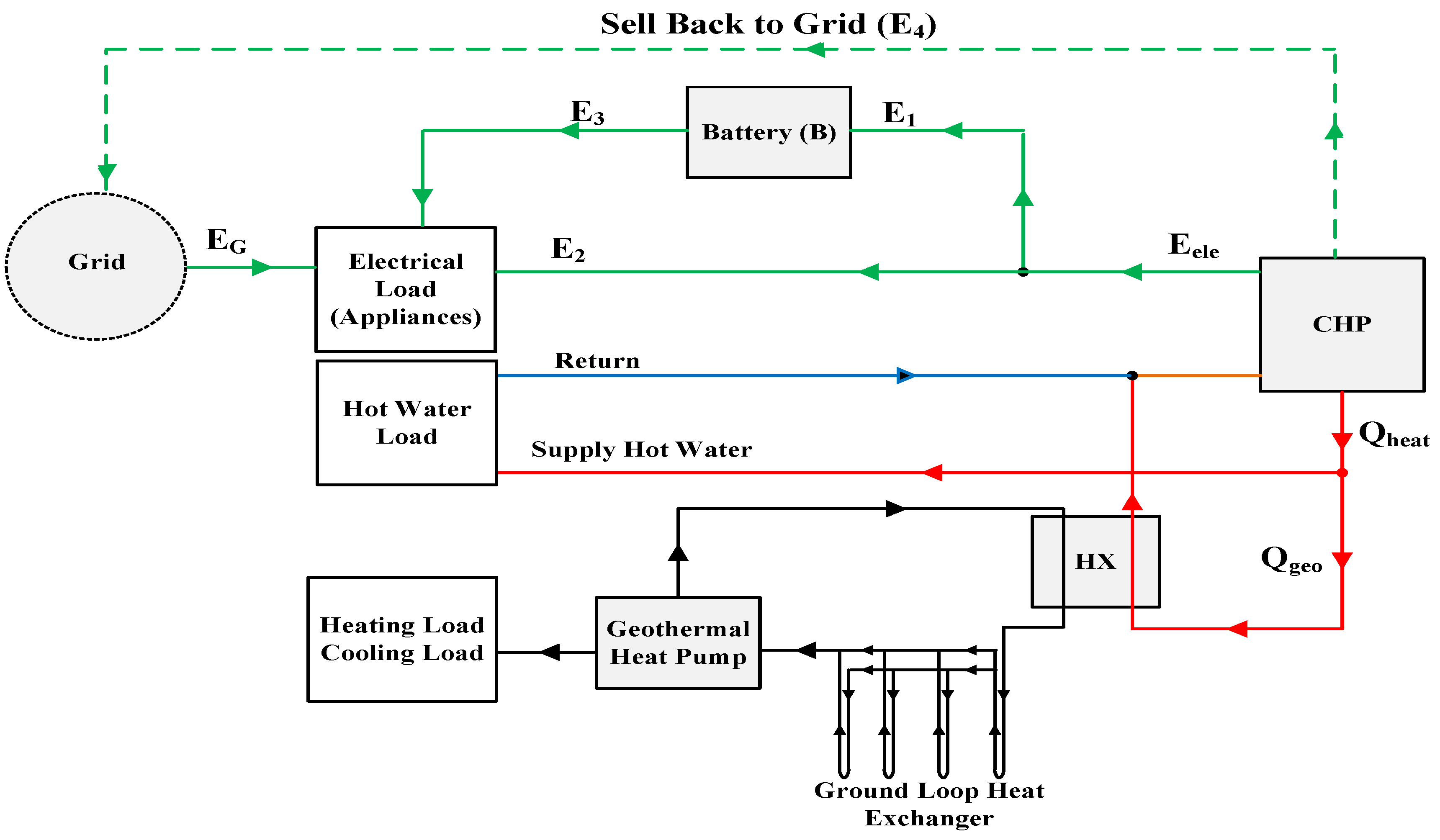


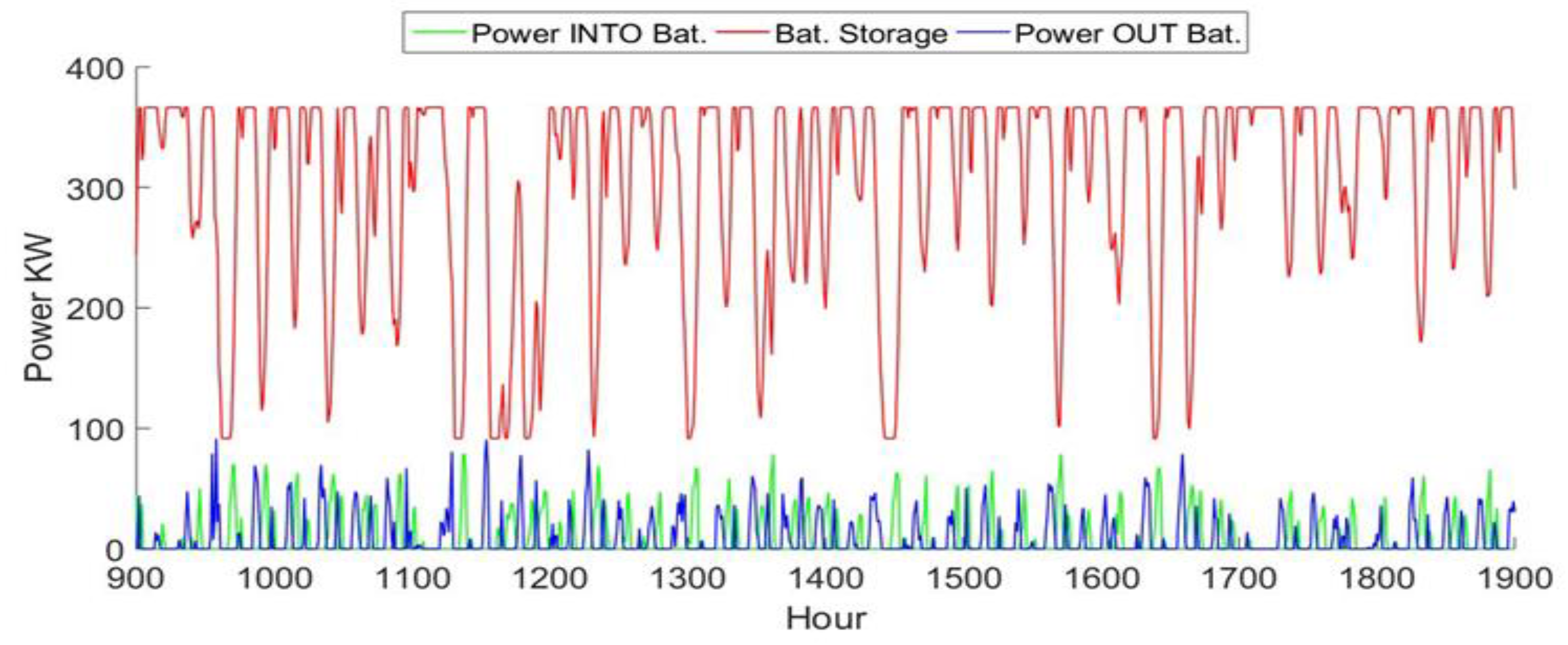


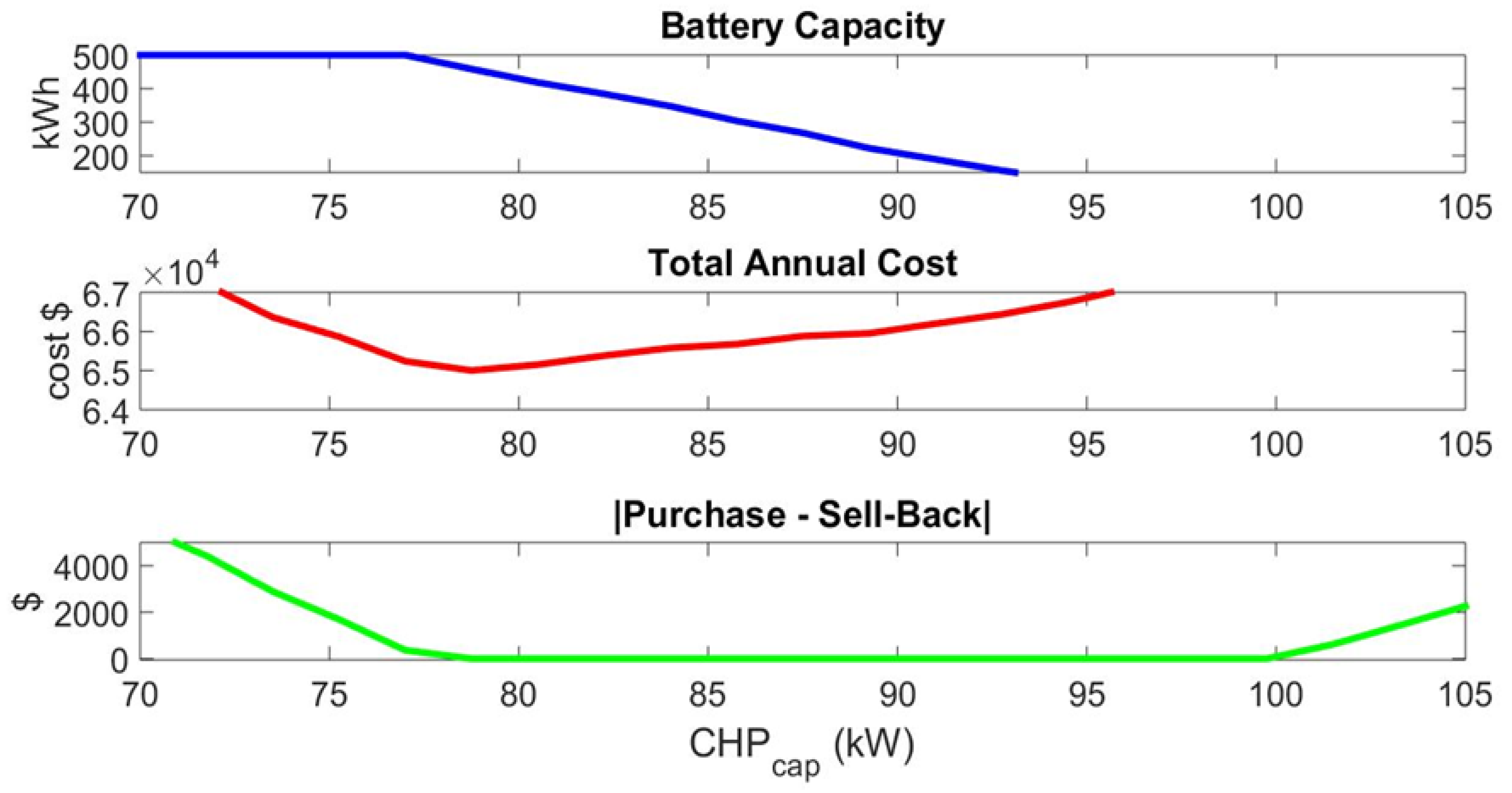
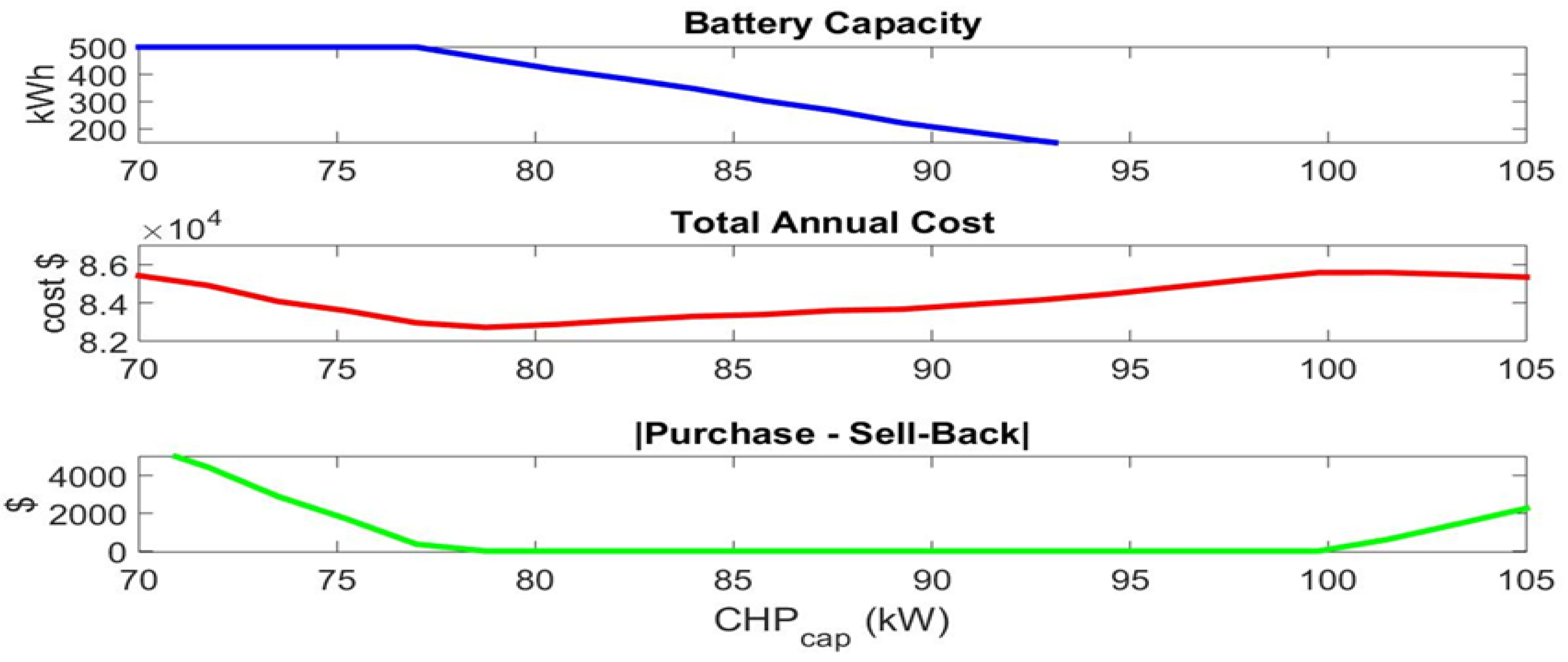
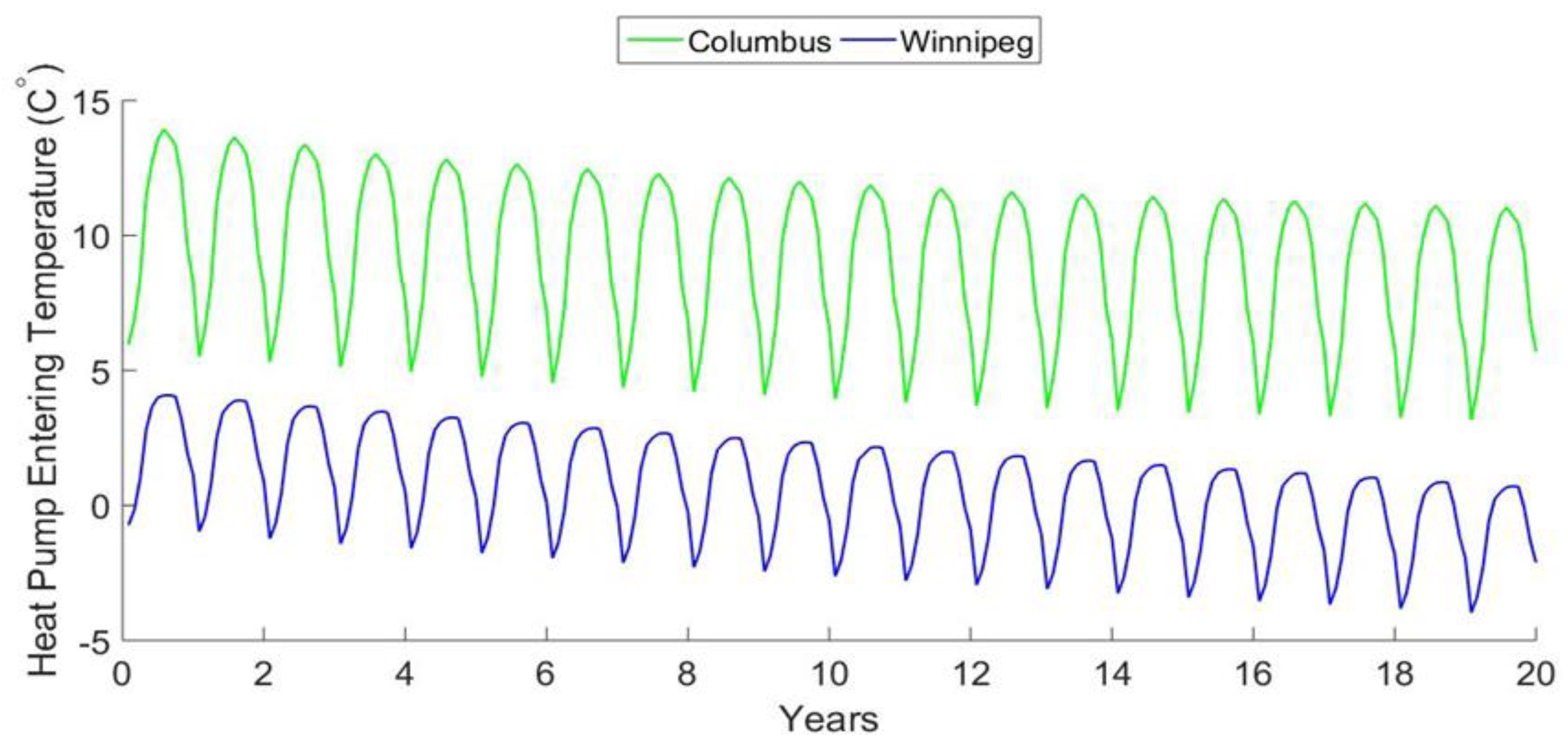

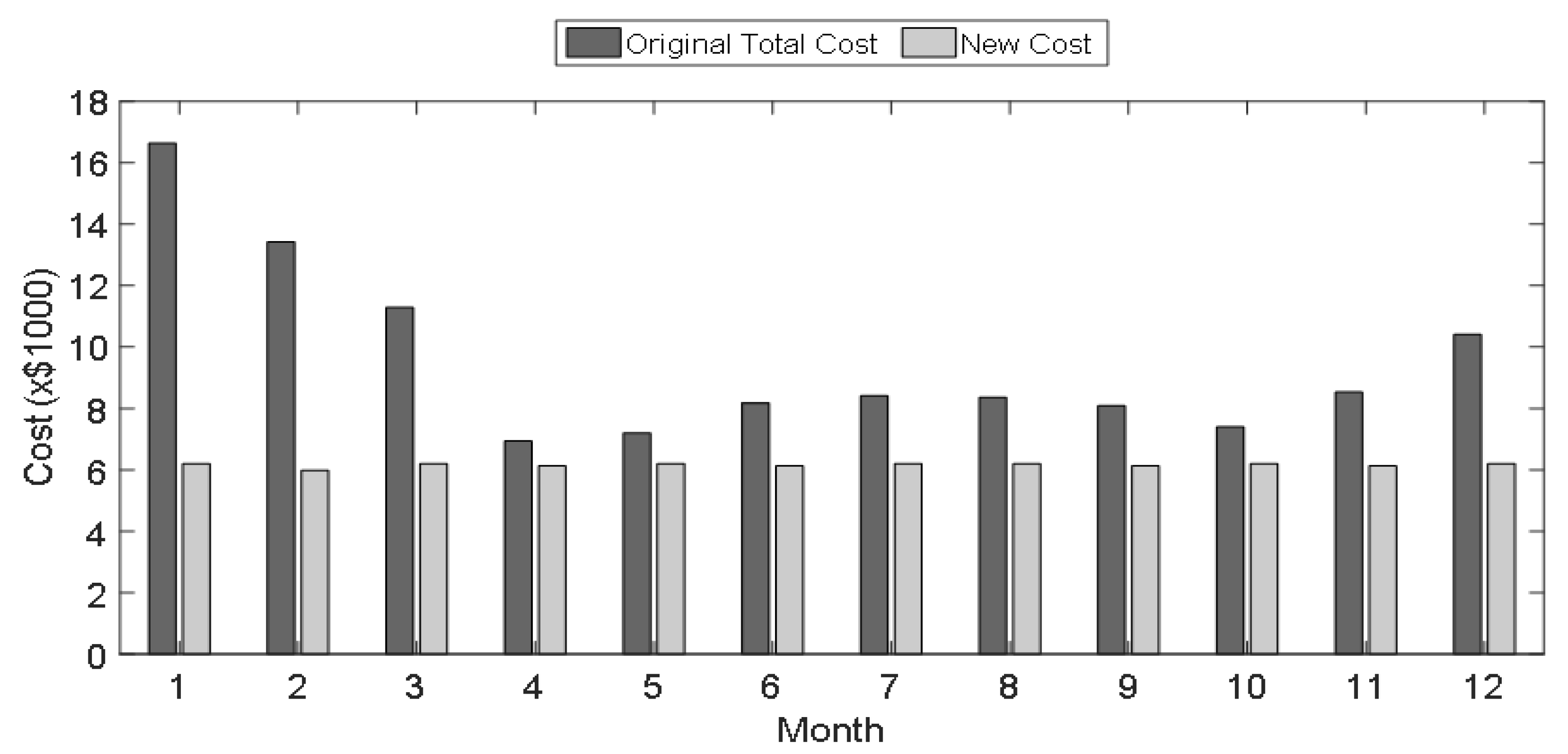
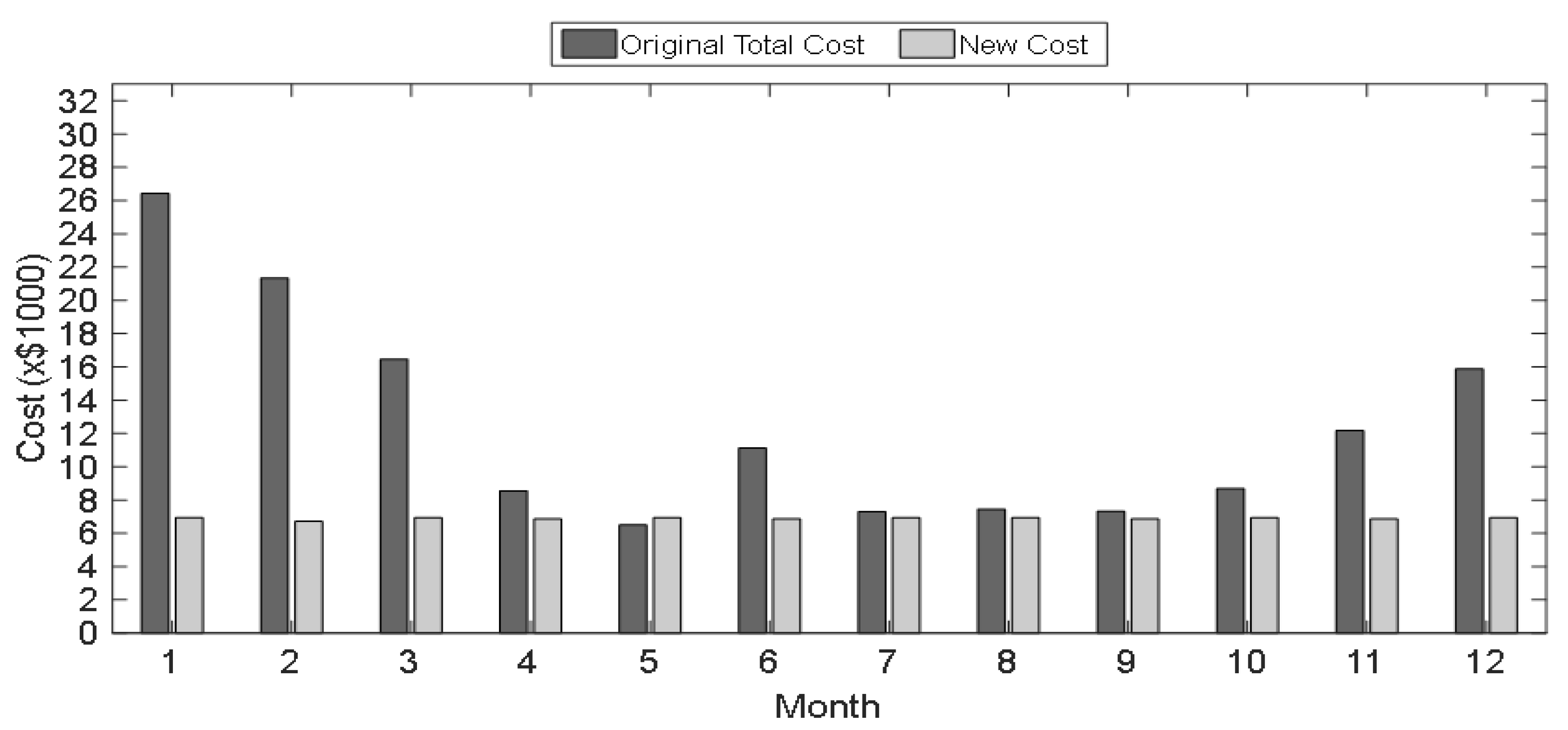
| Variable | Description | Variable | Description |
|---|---|---|---|
| System lifetime (years) | System lifetime (years) | ||
| Loan interest rate | Loan interest rate | ||
| NG energy density(kWh/kBTU) | NG energy density(kWh/kBTU) | ||
| NG price (USD/m3) | NG price (USD/m3) | ||
| NG consumption (kBTU/month) | NG consumption (kBTU/month) | ||
| Hours per month (h) | Hours per month (h) | ||
| Grid transmission price (USD/kWh) | Grid transmission price (USD/kWh) | ||
| Grid generation price (USD/kWh) | Grid generation price (USD/kWh) | ||
| Heat exchanger capital cost (USD) | Heat exchanger capital cost (USD) |
| Variable | Description | Value | Unit |
|---|---|---|---|
| Radius of each borehole | 0.0635 | M | |
| Time for the maximum load | 6 | Hrs | |
| Average underground earth temperature | 10.88 | C | |
| Average ground thermal conductivity | 1.731 | W/m C | |
| Average ground volumetric heat capacity | 2.34 | MJ/m3 C | |
| Design flow Rate | 0.1262–0.1893 | LPS |
| Ohio | Winnipeg | |
|---|---|---|
| Conventional Grid Power Cost (USD/year) | 115,310 USD | 115,310 USD |
| Inflation Rate for Grid Power | 5% | 5% |
| NG Cost for Hybrid System (USD/year) | 26,831 USD | 26,831 USD |
| Inflation Rate for NG | 3% | 3% |
| Initial Capital Cost | 827,240 USD | 1,211,200 USD |
| Loan Lifetime (years) | 20 | 20 |
| Loan Interest Rate | 5% | 5% |
| Net Present Value | 1,240,900 USD | 3,097,200 USD |
| Internal Rate of Return (IRR) | 17% | 20% |
© 2020 by the authors. Licensee MDPI, Basel, Switzerland. This article is an open access article distributed under the terms and conditions of the Creative Commons Attribution (CC BY) license (http://creativecommons.org/licenses/by/4.0/).
Share and Cite
Alqaed, S.; Mustafa, J.; P. Hallinan, K.; Elhashmi, R. Hybrid CHP/Geothermal Borehole System for Multi-Family Building in Heating Dominated Climates. Sustainability 2020, 12, 7772. https://doi.org/10.3390/su12187772
Alqaed S, Mustafa J, P. Hallinan K, Elhashmi R. Hybrid CHP/Geothermal Borehole System for Multi-Family Building in Heating Dominated Climates. Sustainability. 2020; 12(18):7772. https://doi.org/10.3390/su12187772
Chicago/Turabian StyleAlqaed, Saeed, Jawed Mustafa, Kevin P. Hallinan, and Rodwan Elhashmi. 2020. "Hybrid CHP/Geothermal Borehole System for Multi-Family Building in Heating Dominated Climates" Sustainability 12, no. 18: 7772. https://doi.org/10.3390/su12187772
APA StyleAlqaed, S., Mustafa, J., P. Hallinan, K., & Elhashmi, R. (2020). Hybrid CHP/Geothermal Borehole System for Multi-Family Building in Heating Dominated Climates. Sustainability, 12(18), 7772. https://doi.org/10.3390/su12187772






